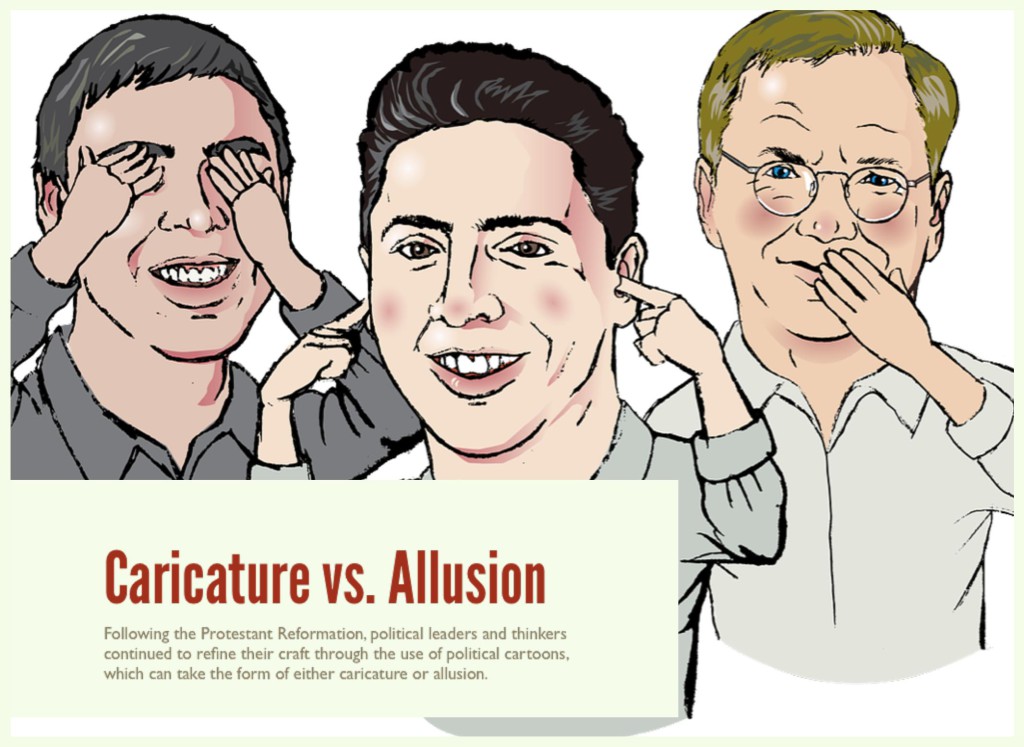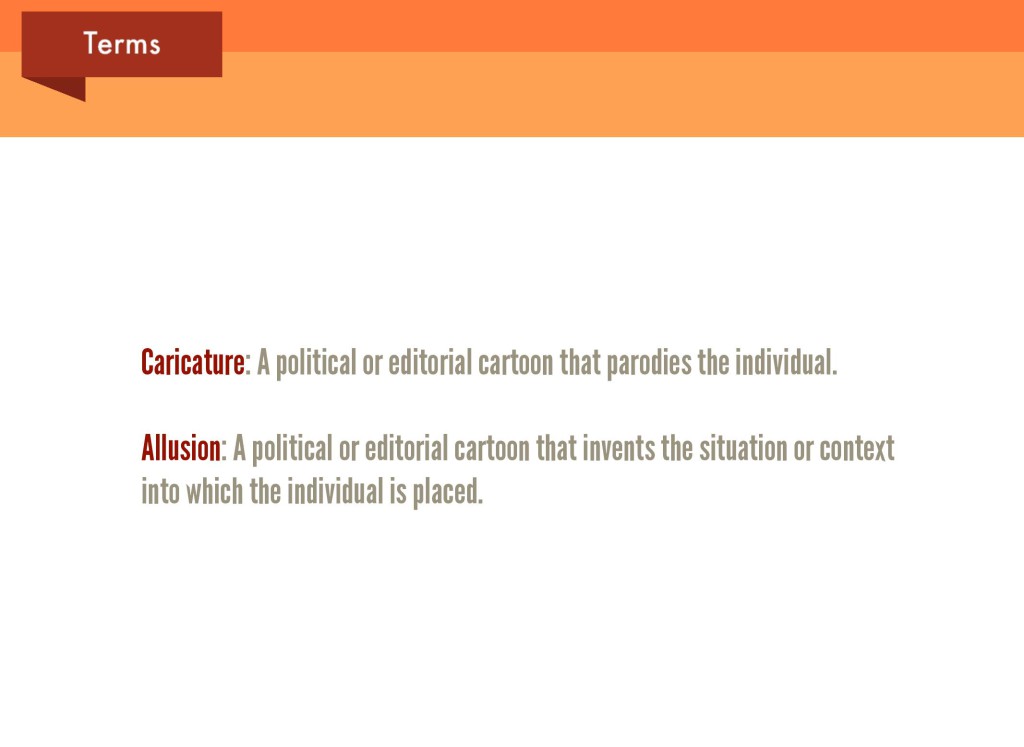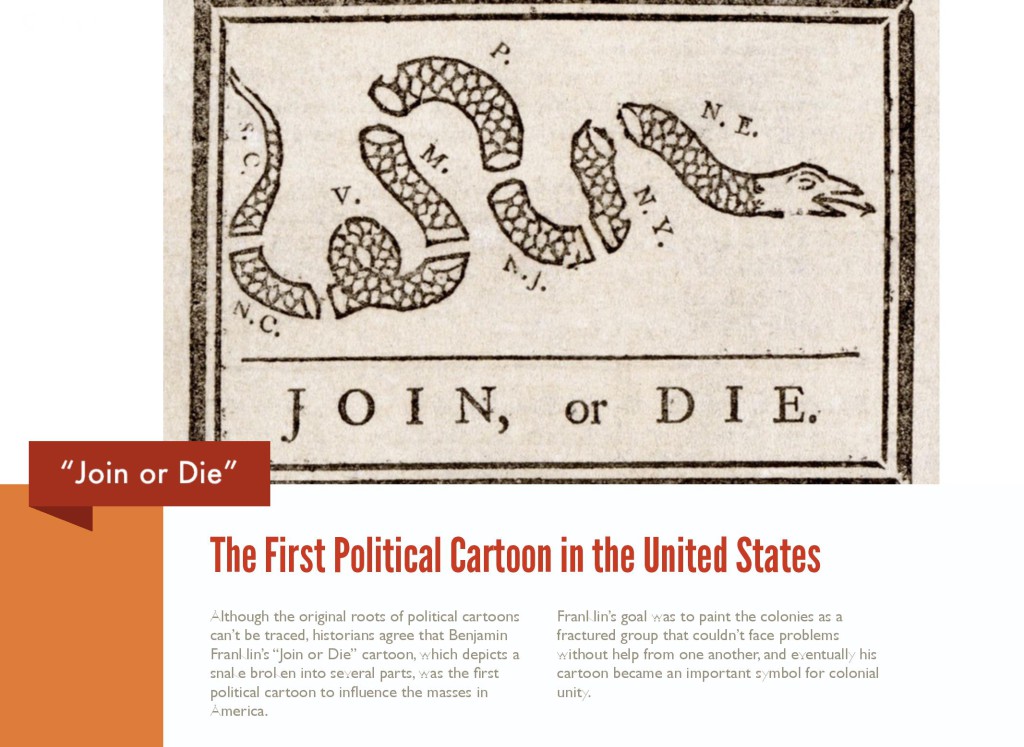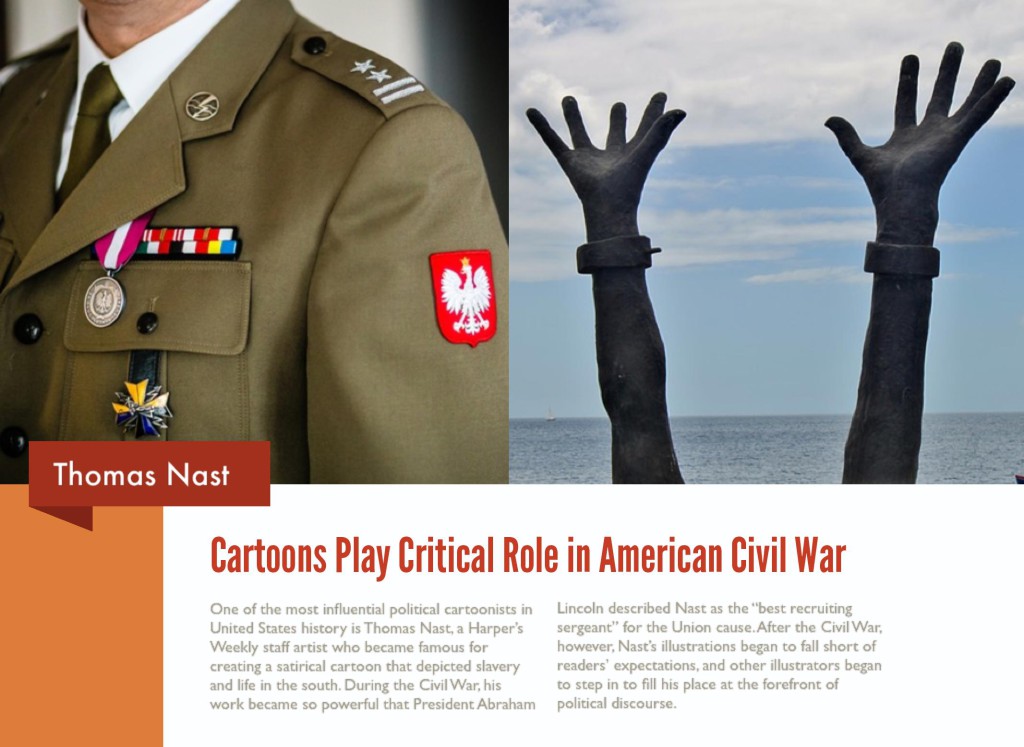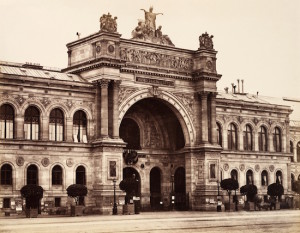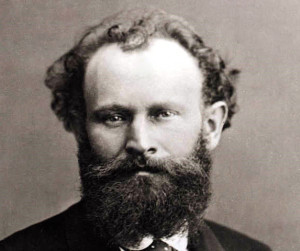Watch: Dali — Master of the Modern Era
Most people think of Dalí’ as the eccentric artist with the wide eyes and very particular mustachio, and melting clocks paintings. Indeed, Salvador Dalí’ did carry a persona steeped in whimsy, but the depth of his art carried an entire art movement called Surrealism.
Born in Spain, Dalí’ was a prominent surrealist painter who was also a highly skilled craftsman. Surprisingly, he attributed the Renaissance painters as his primary influences though his rendition of realism was anything but realistic.
Dalí’s expansive artistic oevre included film, sculpture, and photography, in collaboration with a range of artists in a variety of media.

The Political Cartoon Is Rich in Revolution
Political cartoons have had a tremendous impact on the way history has unfolded, particularly before the majority of the population was able to read. One simple image defining complex social issues are the crux of what makes political cartoons so effective for both the layman and the erudite.
Political Cartoons in Religion
In fact, one of the most notable uses of political cartoons was in Germany during the Protestant Reformation, when Martin Luther used cartoons to persuade the middle and lower classes that the Church’s actions were quite different from Jesus’.
Following the Protestant Reformation, political leaders and thinkers continued to refine their craft through the use of political cartoons, which can take the form of either caricature or allusion.
- Caricature: A political or editorial cartoon that parodies the individual.
- Allusion: A political or editorial cartoon that invents the situation or context into which the individual is placed.
The First Political Cartoon in the United States
Although the original roots of political cartoons can’t be traced, historians agree that Benjamin Franklin’s “Join or Die” cartoon, which depicts a snake broken into several parts, was the first political cartoon to influence the masses in America. Franklin’s goal was to paint the colonies as a fractured group that couldn’t face problems without help from one another, and eventually his cartoon became an important symbol for colonial unity.
Cartoons Play Critical Role in American Civil War
One of the most influential political cartoonists in United States history is Thomas Nast, a Harper’s Weekly staff artist who became famous for creating a satirical cartoon that depicted slavery and life in the south. During the Civil War, his work became so powerful that President Abraham Lincoln described Nast as the “best recruiting sergeant” for the Union cause. After the Civil War, however, Nast’s illustrations began to fall short of readers’ expectations, and other illustrators began to step in to fill his place at the forefront of political discourse.
Joseph Keppler was raised and educated in Austria before immigrating to St. Louis during the Civil War. Because his views and ideology were formed before he arrived on American soil, he brought with him a perspective that was different from many Americans’. Keppler and his colleagues started several illustrated humor magazines, none of which found long-term success. His work is notable, however, because he was able to use it to bridge the gap between the United States and the German-speaking world. The magazines were printed in German during an era when a substantial portion of U.S. voters still spoke German.
It’s clear that activists have used visual imagery to incite a revolutionary spirit in people who might not have received the critical information they needed to take action. Unfortunately, with the advent of the internet, the meme has often overshadowed the satirical political cartoon in publications. Luckily for us purists, reputable ‘offline’ publications like the New Yorker and the New York Times still see the value in keeping the art form alive.
Video: The Reality of Abstract Cubism
The art of Cubism burst onto the Paris scene in the early 1900s and spanned less than a decade. In that short time period, it would change the art movement of the 20th century. Its avant-garde nature would spurn critics and audiences alike to call the art “weird” and initial scathing critiques showered the movement. But soon enough, it would usher in one of the most influential art revolutions of its time.
Pioneered by seven artists including Pablo Picasso, Georges Braque, Henri Le Fauconnier, the intention of the artists was to move two-dimensional forms into three-dimensional ones — and was greatly influenced by the latter works of Paul Cézanne.
The foundation of a cubist artist’s method is to take a subject and re-introduce the object into abstract forms which are not centralized on one focal point, but many viewpoints. The intention is to give alternate realities when a viewer discovers the piece.
Cubism’s influence went on to inspire an ongoing exploration of modernism, including Orphism, Abstract art and later Purism.
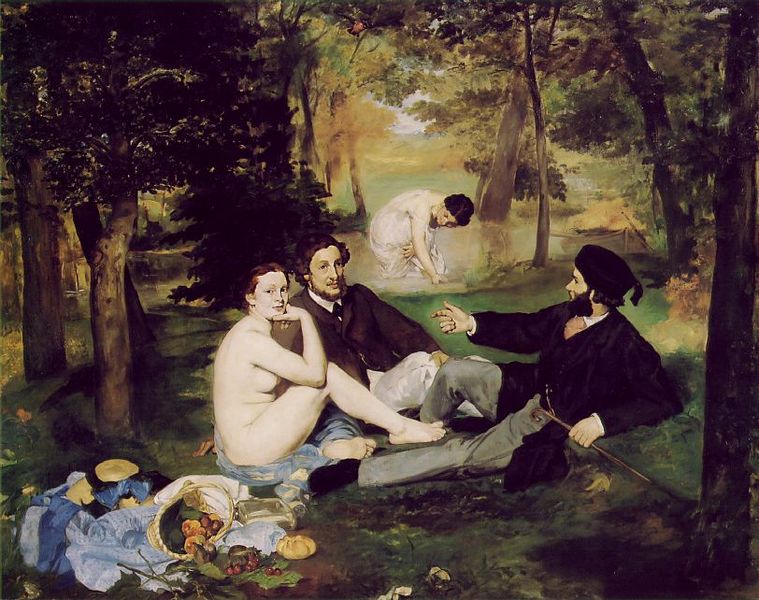
Luncheon With Edouard Manet
Edouard Manet’s masterpiece Dejeuner sur l’herbe contains within it a recipe for modern painting. The piece was one of a number of impressionist works that broke away from classical conventions and paved the road to a daring new era. Dejeuner was denied entry to the 1863 Salon Exhibit in Paris, instead shown under the title Le Bain at the Salon des Refusés (an alternative salon established by those who had been refused entry to the official salon). Le Bain became the principal attraction, generating both laughter and scandal.
This subsequent scandal was occasioned by several reasons. One was that there appeared to be something unfamiliar or puzzling about the female nudes. Nude women in art were nothing new, however, their presence in Dejeuner’s modern setting, accompanied by clothed, bourgeois men, created an incongruity that suggested that these women were possibly prostitutes. The gaze had been shifted from a suggestive nude to a mere naked lady.
Manet also caused a stir with break from the rules of three-dimensional perspective established in Renaissance painting. Manet painted figures with a flatness, perhaps a nod to Japanese art, allowing for the paleness of the woman in the foreground to have a commanding presence against the subdued surroundings. He collapsed the relationship between background and foreground and provided no comfortable gradation between dark and light areas. Though some would disregard him as a ruiner of classical methods, there was an exacting method to the odd composition of Dejeuner sur l’herbe. Manet was purposeful, so his brazen brush marks in his works was a challenge viewers to interact with a frenetic space, instead of the smooth comfortable style per the standard of Salon painting of the time. He was asking the audience to come play with light, let down their preconceived notions about art, and breakthrough to modernity.
The modern pictorial space was taking form, and Manet was at the forefront.
Manet was paying tribute to Europe’s artistic heritage, borrowing his subject from Titian’s Concert Champêtre, and taking his composition of the central group of figures from the Marcantonio Raimondi engraving which in turn drew upon Raphael’s Judgement of Paris.
But the beauty of Dejeuner sur l’herbe is his treatment of the paint and his placement of classical elements in a contemporary scene. Many rendered the painting strange, provocative and obscene in the eyes of the public. But with the passage of time, what critics considered Manet’s obscenities, became the mark of his genius.


